2 Reasons Why You'll Never Deadlift Over 405lbs
Never Ever!
Today we are going to talk about the deadlift. But more specifically, the 2 reasons why you will NEVER DEADLIFT over 405lbs! But, why 405lbs? What makes this number the magic number to stop at? In my experience, even with horrible form (which includes excessive back rounding and a deflated core), the average person can lift about double their bodyweight over time.
But then what happens is with each attempt, you are left with either a lot of pain in your lower back, or the sensation of knowing how heavy the weight is and that you will NEVER progress higher, because without proper form it just seems impossible to think more weight can be added to the barbell.
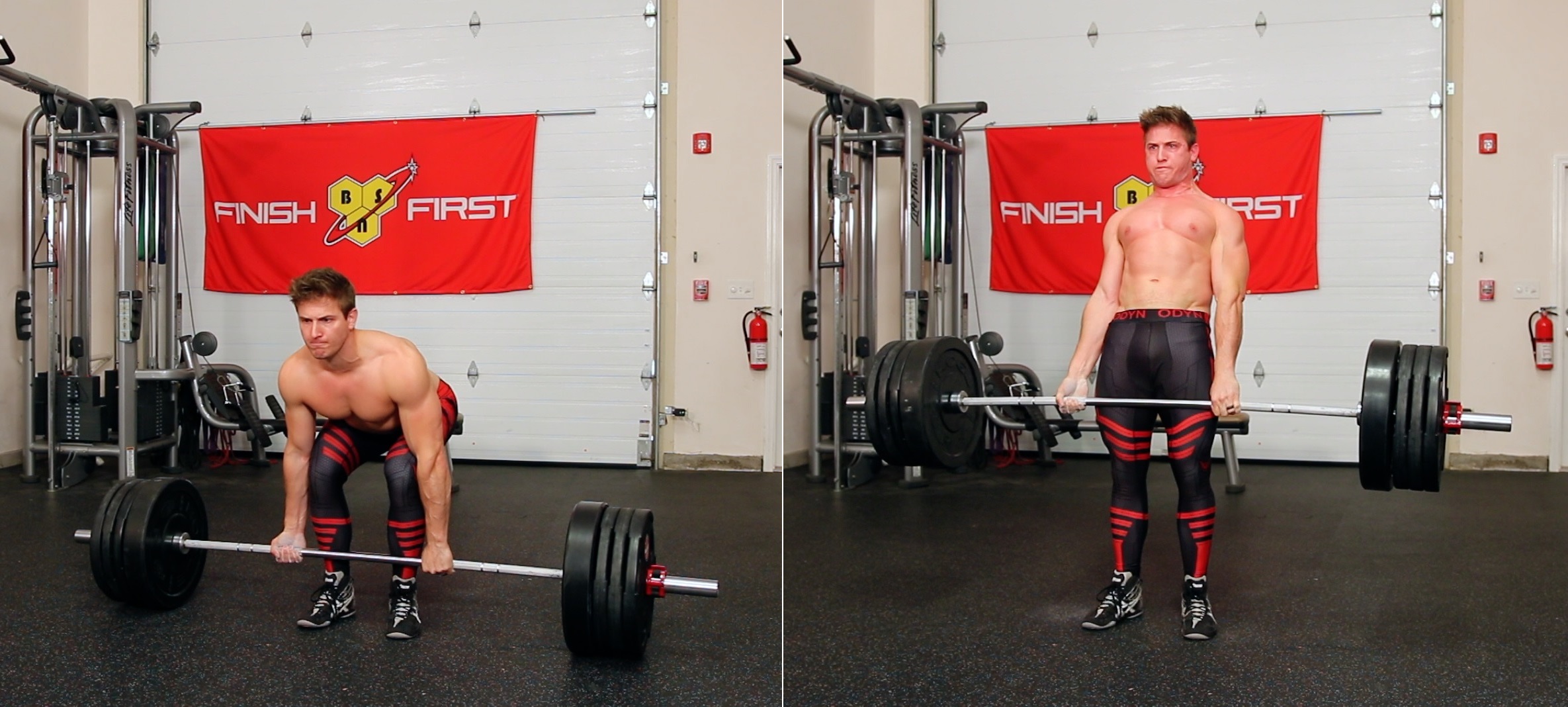
Reason #1: Zero Or Little Leg Drive
There are a lot of reasons as to why your leg drive could be lagging, so we’re going to go over 5 of the most common ones.
1. Push The Earth Down, Don’t Lift The Bar Up
First thing’s first, when you approach the deadlift, you need to already be in the mentality of you’re going to push the earth down, to lift the barbell up. Most people think the deadlift is a back exercise because their back hurts once they’re done doing the lift. Their back hurts because they’re not pushing the earth down to lift the weight, they’re pulling it up with their back.
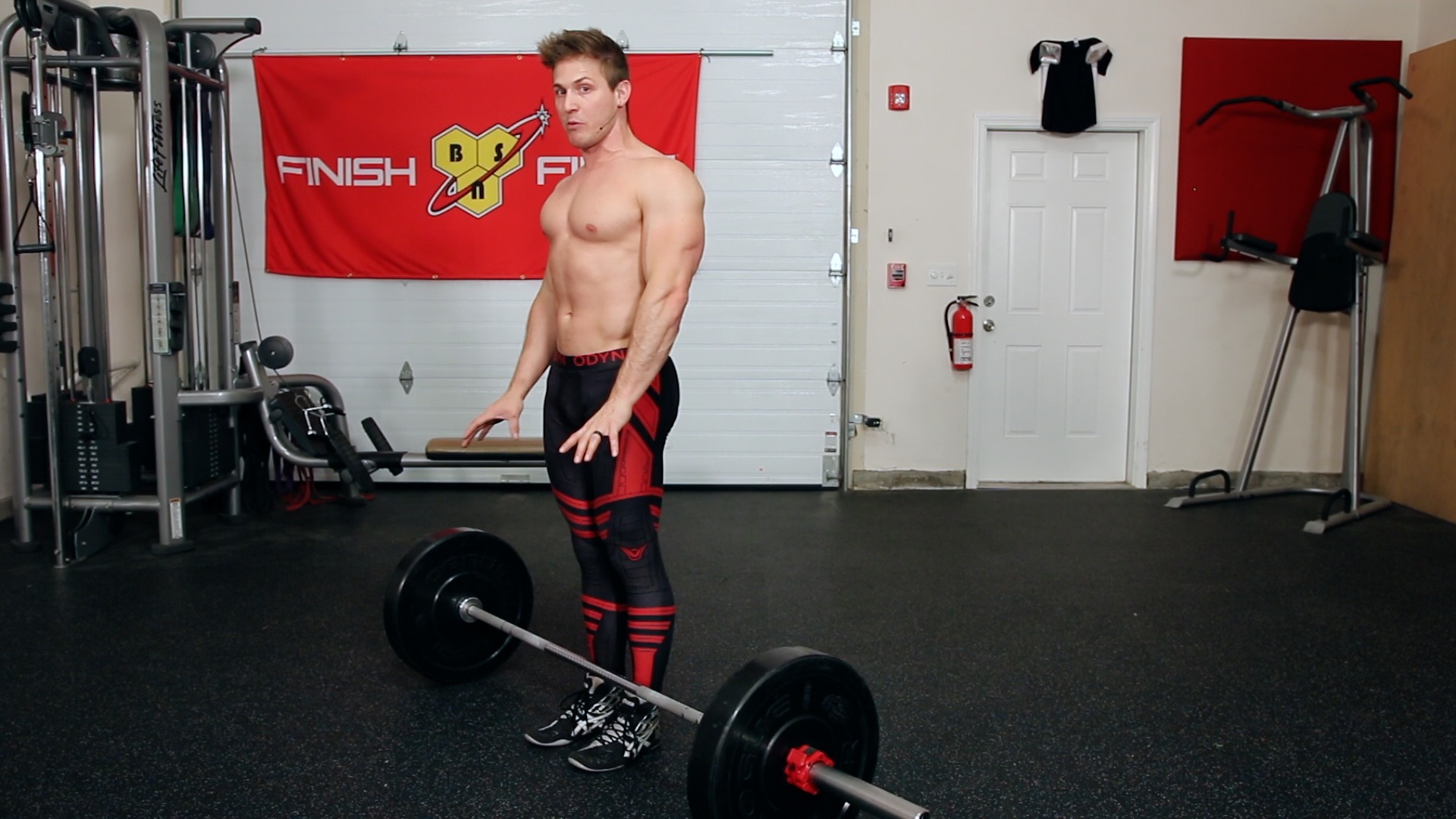
2. Bend Your Knees To Reach The Barbell, Don’t Just “Bend-Over” With Your Lower Back
In order to have leg drive, and be able to push through your hips, you have to have more than just a centimetre bend in your knees when you bend over to grab the barbell. It makes sense, because if you just bend your knees a little bit, you have to literally bend over SO MUCH, and bend your lower back in order to grab the barbell. If your lower back hurts, it’s because you’re barely bending your knees. You need to dip your hips down, and you’ll notice right away that you’re in a more advantageous position to push through your feet and lift that barbell up off the ground. What happens when you don’t bend your knees enough is that it’s ALL lower back for the first half of the movement.
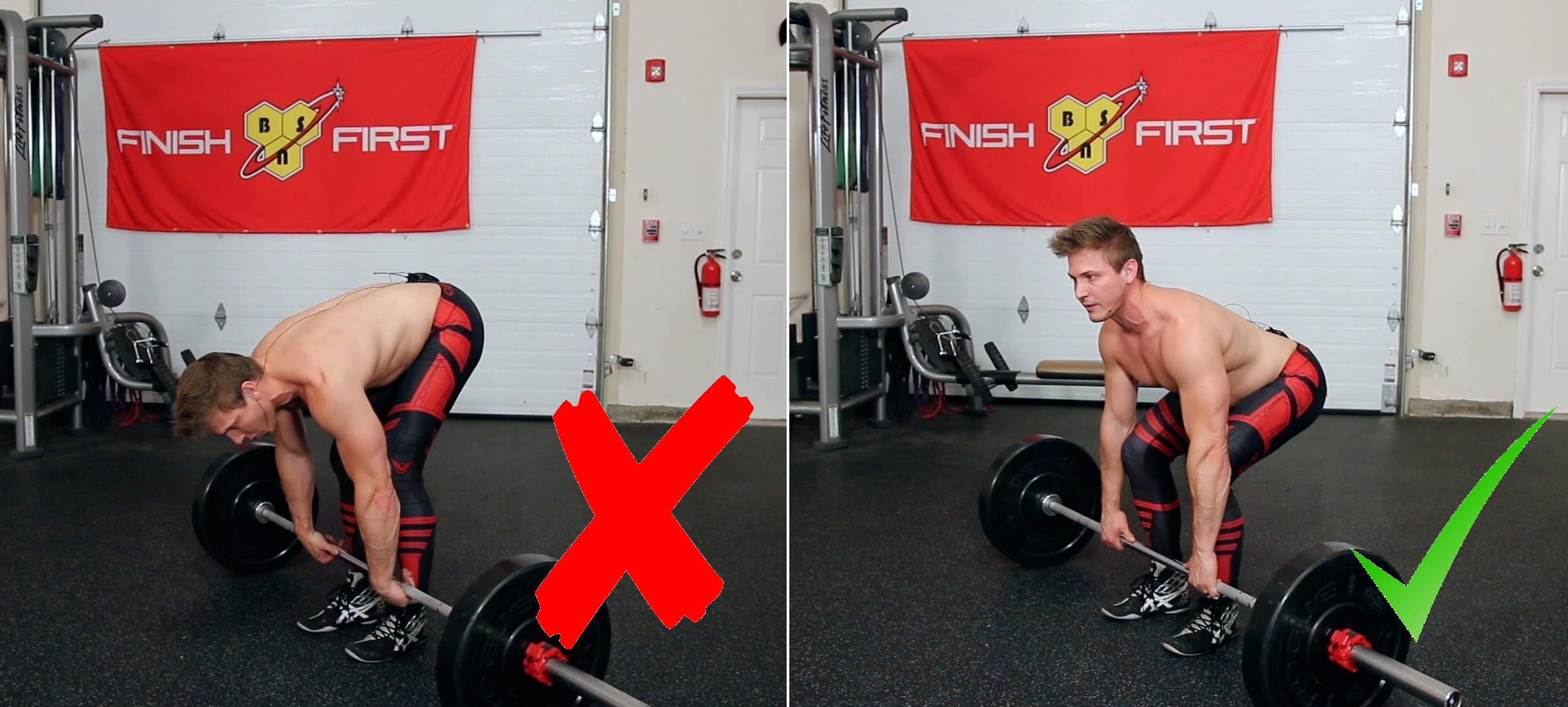
3. Your Stance Is Too Wide
This mostly applies to anyone who is a conventional deadlifter. If your stance is really wide when you approach the bar conventionally, what’s going to happen is that you’re going to have to reach on the outside of your knees in order to grab the barbell. For some of you, this might work, but for the majority of you, what’s going to end up happening is you’re increasing the range of motion that the bar has to travel in order to complete the movement. It takes more energy to hold a barbell with your arms wide, rather than hanging dead straight in front of you. If you notice you have a wide stance, try bringing your feet in a little bit, so that you can bring your hands in a bit closer, and get a neutral drop from the shoulders, and a nice dead hang with your arms.
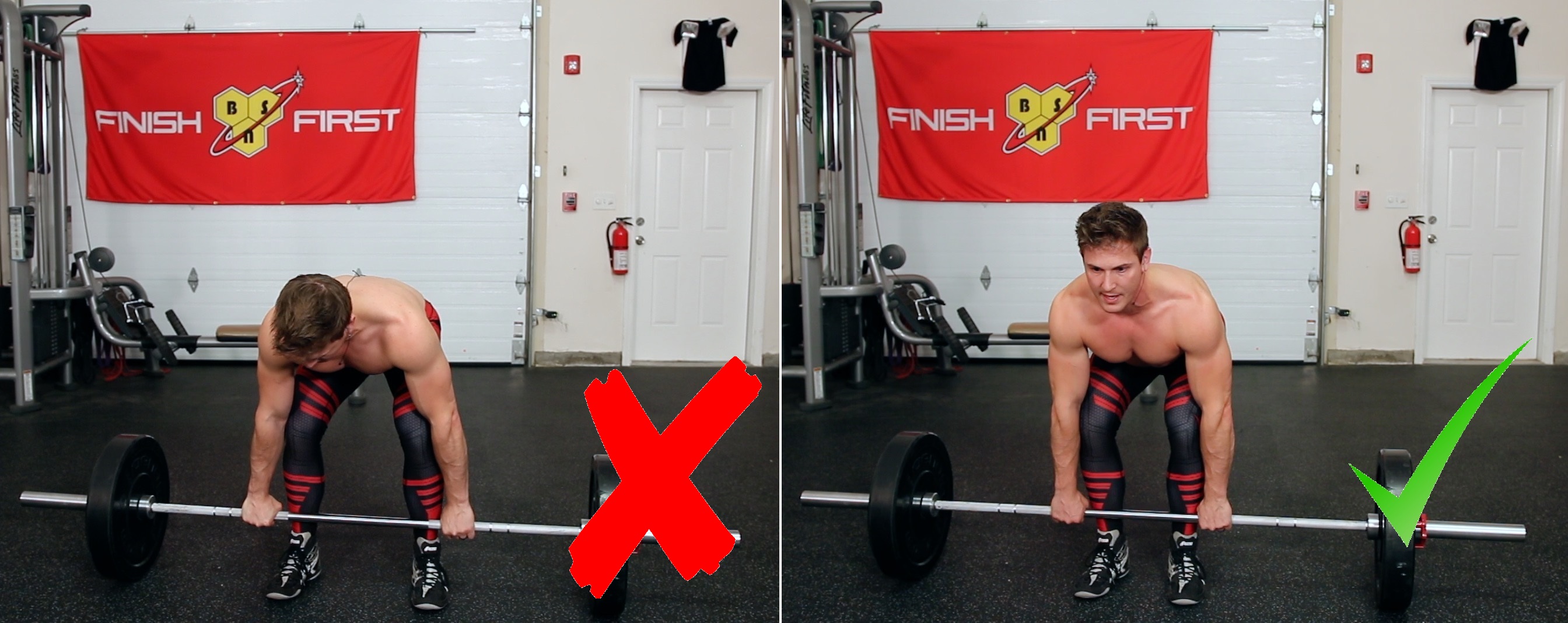
4. A Deflated Core Or No Core Control
Obviously pushing through the legs and hips helps with overall power, but that means nothing if your core is deflated. As soon as you start lifting that weight, if you core is deflated, you go right into spinal flexion, and you can still cause back issues. When doing a deadlift, you need to take in a breath at the top of the movement, get down into position, push through, and either breathe out at the top and reset your breath, or hold your breath until you get to the top, come back down, and then reset your breath. This will vary depending on how much weight you’re lifting, particularly if you’re going for a PR. At the end of the day, it’s not about drawing in as much breath as you possibly can – there’s more of a sweet spot you should aim for. If you take in too much air, you might feel light headed and pass out. If you don’t take in enough, your core’s not going to be able to sustain the amount of weight you’re lifting, whether you have a belt on or not.
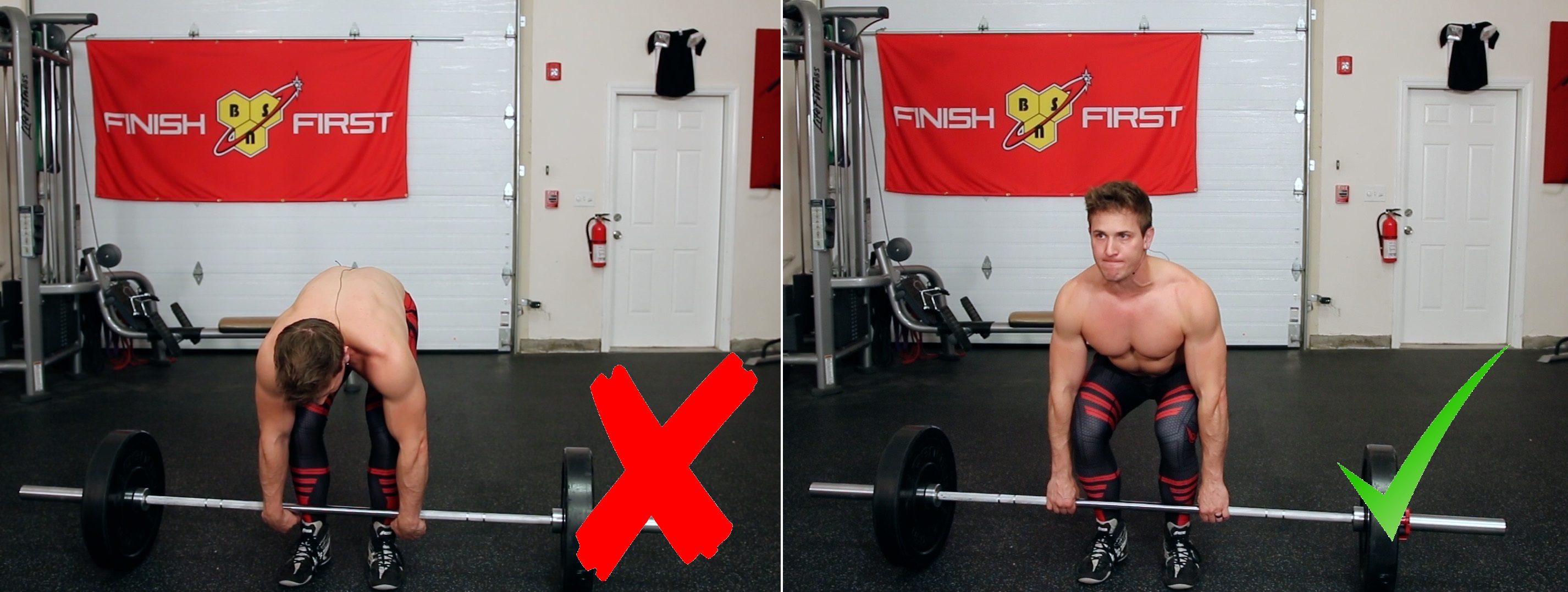
5. You Don’t Have The Right Shoes
When you’re deadlifting, if right from the start you’re wearing running shoes, that means you have about an inch of squishiness between you and the ground, and you’ll immediately be a bit more wobbly. You’ll also be creating a bit larger range of motion that the bar has to travel, and every centimetre counts! That’s why I wear wrestling shoes – they’re as flat as possible without being barefoot, and if I didn’t have wrestling shoes, I would most likely go barefoot with the movement.
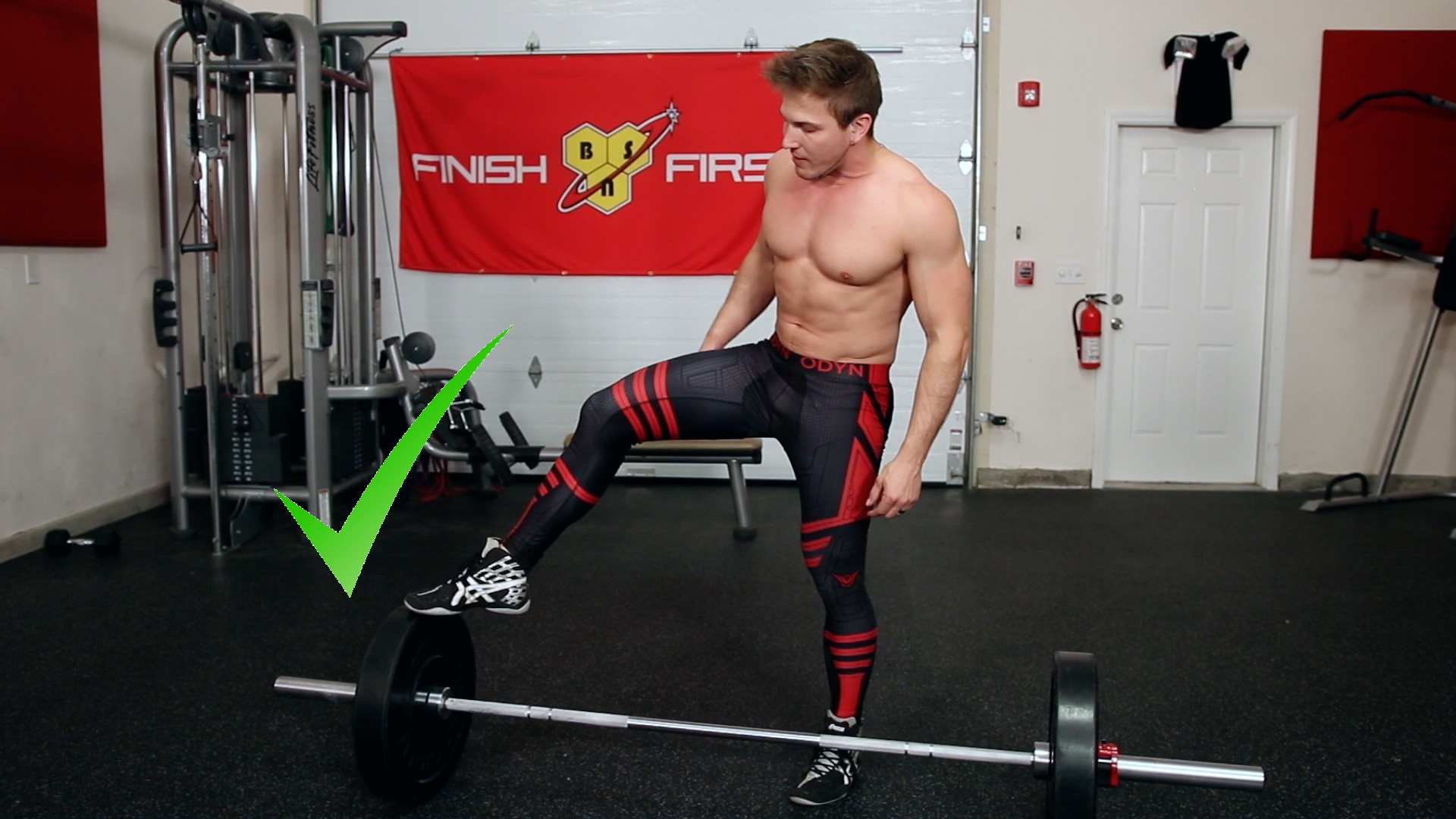
Reason #2: Need More Glute & Hamstrings Training!
Chances are, if you follow all the steps I just gave in reason 1, and you’re still having a hard time with leg drive, it’s because of this – you’re not doing enough accessory glute and hamstring work in your workouts. And I don’t mean start doing more leg curls and glute kickbacks. If anything, exercises that isolate the glutes and hamstrings individually are the number one reason why you don’t have the ability to push through your legs and hips at the same time. You need to do accessory work that’s going to translate over to the deadlift, and it has to be accessory work that teaches your glutes and hamstrings to work together.
Exercise #1: Glute Bridge
We’re going to go over two exercises, the first being the glute bridge. This is one of my favorite exercises to do. It’s really great for teaching the hamstrings and glutes to work together, and it’s also really great for building a nice plumpy, muscular butt, which is good for women AND men.
It is IMPERATIVE with this exercise that you get hip hyper-extension at the top of the movement, and that you reset after every single repetition. If there is no hip hyper-extension at the top of the movement, the rep is USELESS, and you will not fully engage your glutes and hamstrings.
When you get started with this exercise, a lot of people complain that it hurts, and if you don’t do it right, it will hurt. You have to bring your heels as close to your butt as possible, and personally I like to grab my shoes and pull them in nice and tight. Once in this position, you want to retract/pack your shoulders, so that you have a slight arch in your back, before then pushing the barbell into your hips as hard as you can. When you’re in this position, there is a sweet spot on your legs/hips where the barbell can sit, and I have done sets with 400-500lbs without a pad, without the bar hurting me much at all, at least not to the point where I couldn’t do the movement. However, if it’s loose here, it’s going to hurt. Push the bar into your legs before you start the movement, and you won’t have any pain (especially with lighter weight).
For the actual exercise, I recommend that you start off doing about 2-3 sets with light weight, just to learn the exercise, and get your mind-muscle connection going so you know what hip hyper-extension feels like. Once you get the form down, then I suggest moving into 7-8 sets of 5-6 repetitions. Remember, you want this exercise to translate over to the deadlift, so if you’re lifting heavy weight with the deadlift, you need to learn how to lift heavy here to focus on that hip drive.
Proper form is pushing the bar into your hips, then when you get to the top of the movement you’re flexing your glutes as hard as you can to get hip hyper-extension. Hold it at the top for a second, return to the starting position, reset your feet if they happen to slip, then once you’re back in place, go again. You should be able to get a few reps without having to reset, but as soon as you start to slide (either your feet slide down or your upper body slides up), just get yourself nice and compact again, and start doing your repetitions.
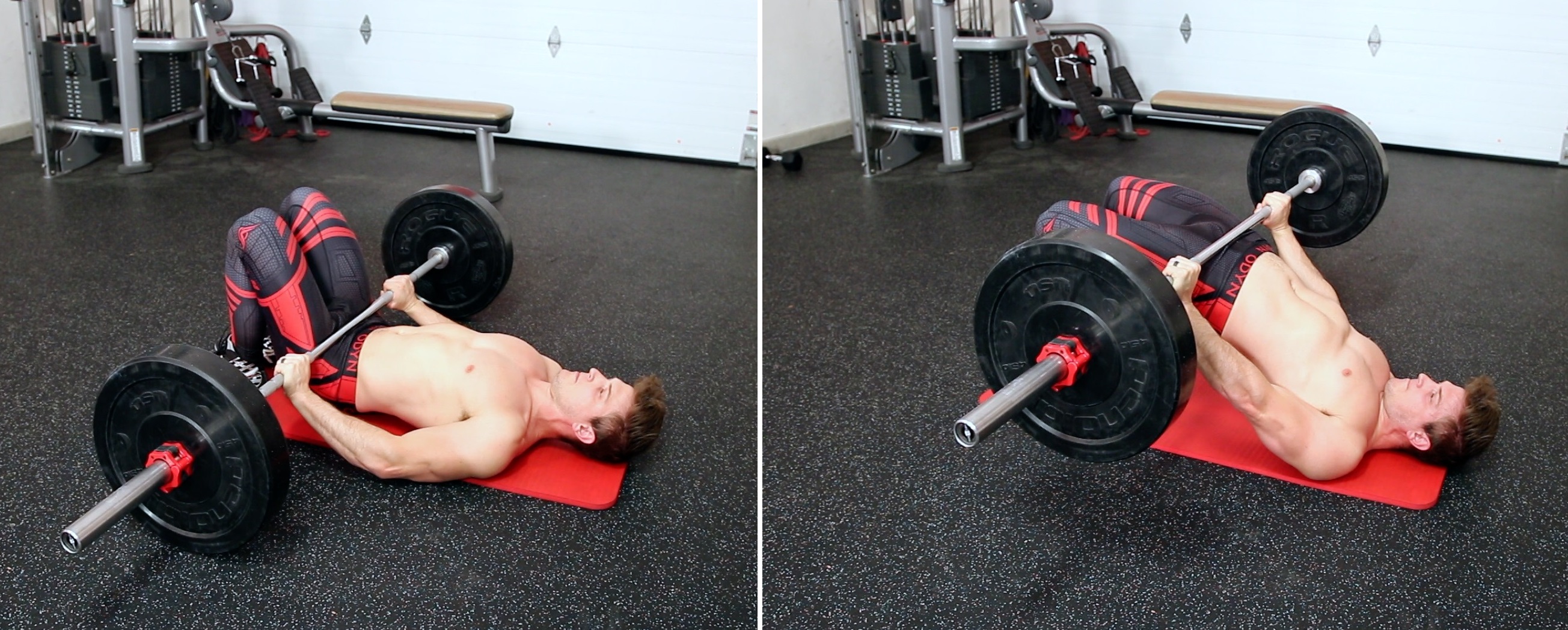
Exercise #2: Deficit Deadlift
Deficit deadlifts are another exercise you can do to help improve your hip drive, leg drive, and teach your hamstrings and glutes to work together. A quick note – if I were to do glute bridges in my workout, I would do them on my leg day, and if I were to incorporate the deficit deadlift, I would do this in replacement of my actual deadlifting, at least to start. If you’re having trouble with deadlifts now, you have to learn/re-teach your body to deadlift properly, so there’s no point in doing traditional deadlifts now, and I’d rather you work with a deficit deadlift because it’s going to get you there much faster. Two weeks of deficit deadlifting before going back to standard deadlifting, and it’s going to be a whole new world, and you’re going to feel SO much stronger.
What makes this movement so effective is that when you do a deficit deadlift, you stand on a platform. I like to stand on a 45lb rubber plate, but if you don’t have anything to stand on, you can get the same effect by literally putting 35lb or 25lb plates on the bar, because they’re smaller. All you’re trying to do is shorten the distance between the barbell and your toes. You also need to make sure you’re in the same exact position you would be in if you were doing your regular deadlifts.
Once in position, everything is the same as a conventional deadlift. You want to follow all of the same cues – take in a breath, go down while keeping your arms neutral, keep your chest up, and push through your legs to get the bar up – that’s how you perform the movement. However, there is one BIG difference here, that’s going to help those glutes and hamstrings fire at the same time, to get more hip and leg drive. In order to get to the barbell, you will have to reach down a lot lower in order to get your hands around the barbell, which is going to force your hips to go lower, which will not only improve your flexibility, but it will also force you to push through your heels, and fire up your hamstrings and glutes a lot harder to get to the top of the movement. Obviously once you get to the top of the movement, flex your glutes, and then return back to the starting position.
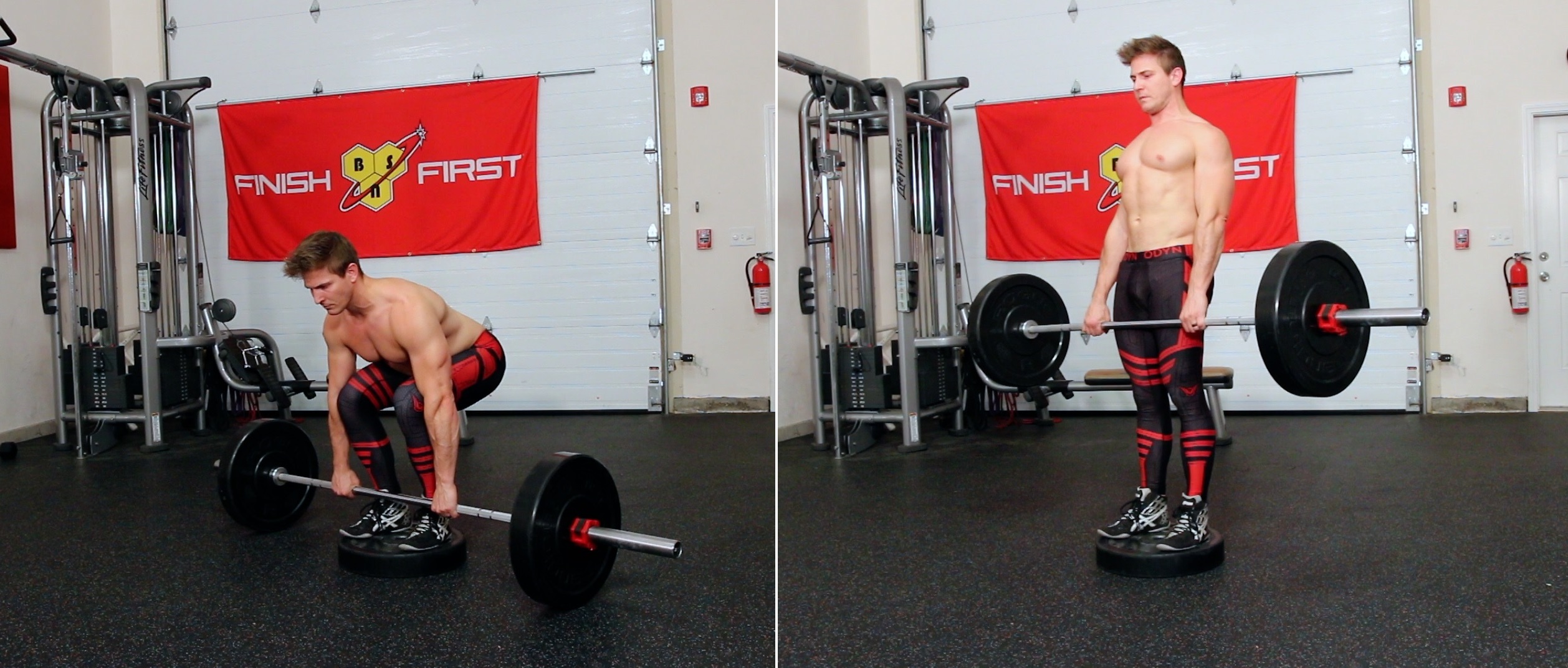
If you’re going to add this exercise to your workout, I would recommend doing 5-6 sets of 8-10 repetitions. This isn’t a movement where you’re trying to overload as much as possible. This is a FORM CORRECTION movement right now for you. Eventually you might be able to overload with this exercise, but that’s not how you’re going to be using it yet, so don’t go so heavy that you’re not learning anything. If you load this up with a ton of weight, and you’re still lifting it up with your lower back, you’re defeating the whole purpose of the movement. So drop the ego, lower the weight, and show me what you go on deficit deadlifts!
Conclusion
Once you start implementing these tips, I guarantee that in 2 – 3 weeks you will EASILY set a new PR. Just make sure that as you go through this adjustment period, you DRASTICALLY lower the weight on your current deadlifting sets and reps. This way you can build a stronger mind-muscle connection while implementing these tips. Also, I have another video that dives MUCH DEEPER into deadlift form to lift as heavy as possible, and you can check that out HERE.








